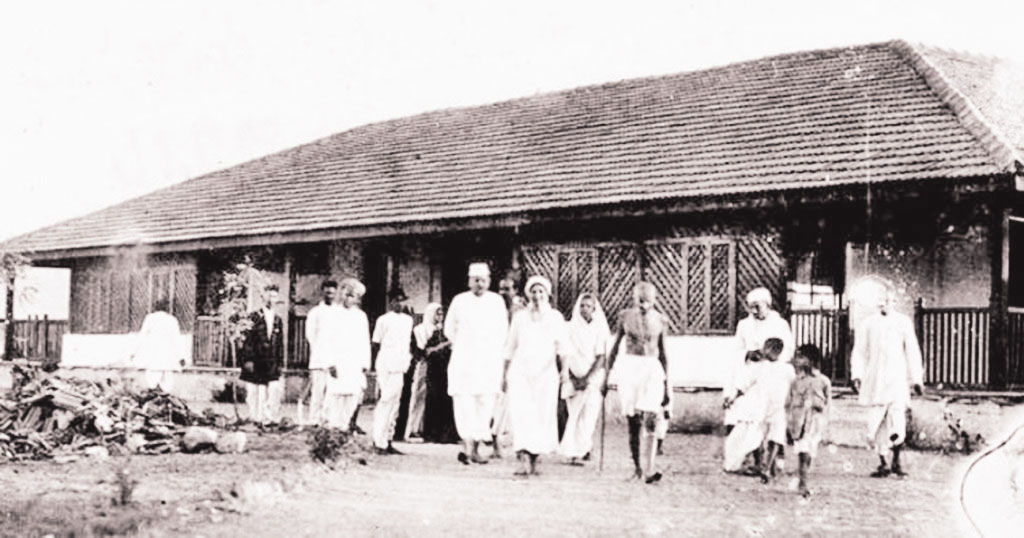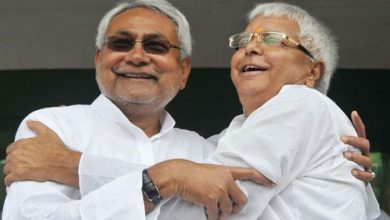World Heritage Status to Satyagrah Ashrams of Mahatma Gandhi Under UNESCO Consideration
Satyagraha , a source of inspiration for nonviolent struggles across the globe.
Siby K. Joseph
World Heritage sites are selected by UNESCO on the basis of cultural and four natural criteria. The Permanent Delegation of India to UNESCO submitted the sites of Satyagraha associated with India’s non-violent freedom movement on April 15, 2014(Ref.: 5899) under cultural category under criteria four and six.

The criterion four is read as follows “ to be an outstanding example of a type of building, architectural or technological ensemble or landscape which illustrates (a) significant stage(s) in human history”. The criterion six is “ to be directly or tangibly associated with events or living traditions, with ideas, or with beliefs, with artistic and literary works of outstanding universal significance. (The Committee considers that this criterion should preferably be used in conjunction with other criteria)”
Outstanding Universal Value
The Delegation of India to UNESCO justified its selection of sites on the basis of its outstanding Universal Value. The statement highlights the universal significance of Satyagraha which has been a source of inspiration for nonviolent struggles across the globe.
“At a time when the world was witnessing violent warfare, armed revolutions and externally assisted attempts at decolonization, a mass movement for freedom from the British colonial rule through non-violent means was surging in India, a rare and notable example of emancipation driven solely by Indians. This non-violent means of resistance led by Mahatma Gandhi was termed as Satyagrah and became synonymous with the cry of Indian independence agitation.The Universal Value of this theory lies in its able demonstration in the Indian context that became a role model for other civil rights movements across the world such as the anti-apartheid movement in South Africa led by Nelson Mandela, and the African-American civil rights movement in the United States led by leaders such as Martin Luther King Jr. and James Bevel.”
Justifying the criterion four of the UNESCO the delegation stated that “The Ashram as the outstanding example of a type of building or architectural ensemble that illustrates a significant stage in human history – the training centres where the principle of non-violence was indoctrinated in Satyagrahis. Similarly in the case of Criterion six the delegation stated that “ The series is directly associated with the idea of Satyagrah, non-violent civil resistance, which is of Outstanding Universal Value and has impacted other civil liberation movements across the world.”
Tentative Lists
Accordingly the Tentative Lists of States Parties are published by the World Heritage Centre at its website. Among the list there are twenty places. However, three ashrams of Gandhi viz. Kochrab Ashram, Sabarmati Ashram and Sevagram Ashram have been identified as the first three in the list because of its association with the Satyagraha movement. It says that “ Ashrams established by Mahatma Gandhi that acted as Training centres for indoctrination of the principles and instincts of non-violence, or Satyagrah.”
Further it stated, “India’s non-violent freedom movement, a rare and notable example of political emancipation achieved during the first half of 20th Century CE that became the role model for civil resistances worldwide. The movement demonstrated effective implementation of the instrument of Satyagrah, a political strategy promulgated by Mahatma Gandhi based on non-violent means of civil resistance through tools such as protests, marches, demonstrations and boycotts. The success of Indian Satyagrah lay in it being a mass movement of civic resistance that saw participation of almost all sections of society rising above the divisions of caste, creed, religion and gender, unified against the oppressive colonial rule in the country. And the impact of this movement can be gauged from the fact that since 1966, over sixty political transitions have been effected through nonviolent civic resistances worldwide.”
The arguments placed by the delegation for inclusion of Ashrams as World Heritage are
1.”When using Satyagrah in a large-scale political conflict involving civil disobedience, Gandhi-ji believed that the Satyagrahis (follower of the Satyagrah philosophy) must undergo spiritual and physical training to ensure discipline and to develop their nonviolent reflexes. For this, he founded Ashrams (the Kochrab Ashram near Ahmedabad, Gujarat; the Sabarmati Ashram in Ahmedabad, Gujarat; and the Sevagram Ashram near Wardha, Maharshtra) to teach Satyagrah. The Ashrams set out to remedy what it thought were defects in our national life from the religious, economic and political standpoints. This development contributed at the first level of indoctrination in non-violence, i.e. personal transformation.”
2.”The Ashrams also acted as grounds for the next level of indoctrination in non-violence, i.e. construction programme for social upliftment and projects for welfare of oppressed sections of society. The principles of social equality and non-discrimination were the basis of life in the Ashrams and activities such as khadi weaving aimed at empowering the poorest of the poor and the highly oppressed providing them with opportunities of self-reliance against social discrimination prevalent in Indian society and politico-economic constraints imposed by the British.”
Case for the Phoenix Settlement
Gandhi Development Trust run by Ela Gandhi granddaughter of Mahatma Gandhi is in forefront of explaining “Why Phoenix Settlement should be declared a World Heritage Site.” It is pertinent to note that the South African government declared the Phoenix Settlement in Durban as a National Heritage Site on the 151st birth anniversary of Mahatma Gandhi. In July 2017,old Ahmedabad was declared India’s first UNESCO World Heritage City and Sabarmati Ashram is a part of it .
Ashrams of Gandhi are historical landmarks of India’s unique struggle for freedom under the leadership of Mahatma. It is high time all the stakeholders including government the demand for Heritage tag to Gandhi’s Ashrams should be placed in various international forums and they are already included in UNESCO’s tentative list awaiting world heritage status. In order to get the heritage tag it is a common knowledge that the changes that have been made to original structures and complexes associated with should not be drastic. Therefore it is very important to preserve and protect Gandhi Heritage Sites.
On the occasion of 151st birth anniversary of Mahatma Gandhi the Chief Minister of Maharashra Uddhav Thakrey made a public appeal to declare the Sevagram Ashram as a World Heritage Site. “Mahatma Gandhi is an idea and we cannot move ahead in time without remembering it. Gandhiji’s thoughts are a guiding force to implement his idea of freedom. The Sevagram Ashram needs to get a status of World Heritage Site.”
It is high time that all stakeholders including government should demand world heritage tag to Gandhi’s ashrams. It should be placed in various international forums as they are already included in UNESCO”s tentative list awaiting word heritage status.
Please read this also :
====
Dr. Siby K. Joseph is a noted academic and Gandhian Scholar having more than two decades of teaching and research experience. The books written and edited by him were published by Routledge, Concept, Manohar and many other publishing houses. His most recent writings are Lanza del Vasto: A Messenger of Peace (2018) Gandhi in South Africa: A Racist or A Liberator? (2019) Kasturba Gandhi: An Embodiment of Empowerment (2020).This Article is a part of series of articles on Ashrams established by Mahatma Gandhi.
About the Author
Dr. Siby K. Joseph is Director, Sri Jamnalal Bajaj Memorial Library and Research Centre, Sevagram Ashram Pratishthan, Wardha-442102, Maharashtra.





